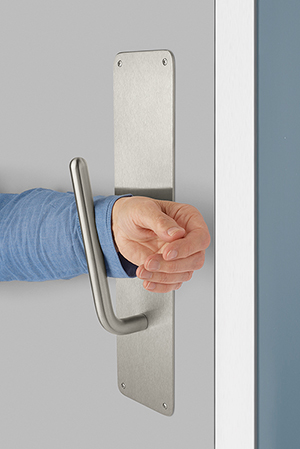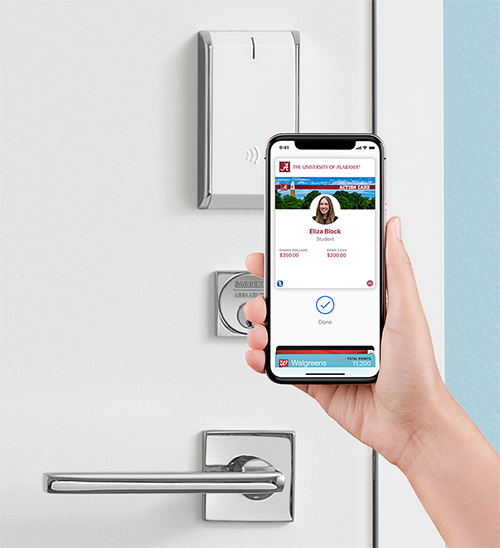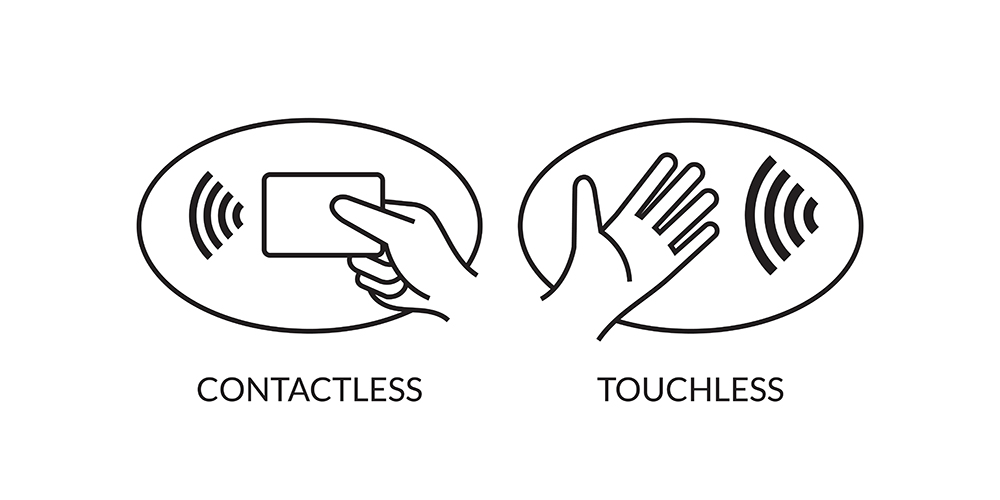The COVID-19 pandemic has transformed the way we interact with our surrounding environments. Whether that be a work-from-home setup or a visit to your local health clinic, we’re more conscious than ever about how we operate and move within a space.
It is likely this increased awareness will extend past the current pandemic, meaning our everyday spaces in places like universities, hospitals and office buildings will need to identify important, new techniques to mitigate the spread of contagions and increase functionality of existing infrastructure.
As an industry, our goal is to continue to strive for safer and more secure environments. With the world gradually bringing people back into classrooms and offices, now is the perfect time to reevaluate what that looks like to ensure that these spaces are both productive and safe for occupants.
The increased demand for safety and security processes and procedures, as well as the design and deployment of innovative solutions and technologies, will help to address today’s challenges while better preparing us for the future.
Addressing the Need for Touchless
The pandemic has accelerated the need for and the adoption of existing and emerging technologies to not only create safer environments but to also ensure the continuity of our daily lives. A recent survey of college students revealed that 31% of students did not feel safe returning to a university campus for the fall semester last year due to the health implications around reopening schools during the pandemic. Universities can help address these health safety concerns by reducing touchpoints and maintaining cleanliness across all buildings on campus. 
Some immediate adjustments can include setting up sanitation stations, providing easy access to cleaning supplies and emphasizing safety protocols. But cleaning and sanitation protocols are only one piece of the puzzle. Administrators, facility managers and faculty face other obstacles like directing the movements of large student bodies while reducing contact and managing common areas like residence halls and campus buildings.
With social distancing protocols in place, access control across campuses plays an increasingly important role to mitigate risks in these types of high-traffic areas. When it comes to building a resilient access control system, new innovations and applications of existing automated and hands-free technologies will be valuable in helping facilities re-open safely, while also setting them up for a faster, more effective response in the future.
Touchless solutions have historically been prioritized for function within niche areas, like warehouses and bathrooms. But following the rise in COVID cases, the purpose and demand for touchless solutions has shifted from strictly function to taking on the bigger task of reducing germ spread in common areas with high foot traffic.
Luckily, frictionless access control can meet varying budgets, be customized to a building’s aesthetics and needs while being easy to install, often with existing infrastructure.
Customizing Touchless Solutions
Creating a healthy environment across a campus is essential and this can be addressed by reducing potential touchpoints on highly trafficked openings with hands-free door hardware. Low-touch and touchless hardware can help thwart the spread of germs by reducing the number of people handling levers, pulls, exit devices and other parts of the door opening.
For example, buildings can create maximum convenience and safety through fully automated door openings by pairing low-energy door operators with wave-to-open switches and an electronic strike or electric latch retraction exit device. To avoid sacrificing design and aesthetics, wave-to-open switches can be used with glass doors as well. Double door entrances can also be converted into hands-free openings with an arm pull on the exterior side of the door – a quick, easy and economical upgrade.
Mechanical hardware upgrades using a push/pull deadlatch trim are also an option that enables a door to be opened with the push of a hip or the pull of an arm. This reduces the skin-to-surface interaction that allows contagions to spread. Another option for common areas is to add a motion sensor for doorways that remain open while people pass through.
Healthier environments can be created without sacrificing security, convenience or design while enhancing the functionality and security of the space. While wave-to-open switches and motion sensors can open the door when movement is detected, actuators like contactless readers can be used in conjunction with mobile credentials, RFID cards, fobs, and intelligent keys to provide hands-free access control.
Tracking COVID Through Intelligent Openings
Access control across a campus can be taken to the next level with intelligent openings. An intelligent opening not only secures the people or assets behind the opening but also has the ability to increase efficiency and productivity, improve the user experience, and provide valuable data and insight.
 With the added ability to monitor electronic components in the solution, facility managers are able to track who has come in and out of an access point and can aid in contact tracing, mapping against others that have visited that access point. For example, if a COVID case is reported at a university, a student’s credentials (i.e., their badge or student I.D.) used to enter a building or room can be pulled up to see which rooms were accessed as well as who else had been in those rooms and might now be at risk.
With the added ability to monitor electronic components in the solution, facility managers are able to track who has come in and out of an access point and can aid in contact tracing, mapping against others that have visited that access point. For example, if a COVID case is reported at a university, a student’s credentials (i.e., their badge or student I.D.) used to enter a building or room can be pulled up to see which rooms were accessed as well as who else had been in those rooms and might now be at risk.
With intelligent and touchless openings, security isn’t sacrificed. Instead, it’s enhanced. The security industry is continuously evolving in response to the world around us, prompting a greater need for innovation. Universities can consider each opening across a campus and customize solutions based on specific security requirements, beyond health, while also keeping costs in line.
Today’s environment requires less contact with surfaces that are commonly touched to help reduce the transmission of germs. A hands-free door opening can minimize a multitude of skin-to-surface touchpoints throughout the day, while intelligent openings provide insights needed to monitor and track the spread of the virus.
Touchless Solutions of the Future
Over the next five to 10 years, the role of mobile technology will increase to the point where traditional keys might no longer exist. Access control will likely even move away from card and I.D. badges and live primarily on mobile devices. As we consider near- and long-term capabilities and innovations, touchless solutions are going to move us faster than ever to a place where every opening incorporates some aspect of technology and the COVID-19 pandemic is only accelerating that journey.
New product innovations in areas like frictionless access control will help create more resilient businesses capable of managing unpredictability in the face of adverse and challenging times. Universities that reevaluate their current systems with a focus on creating safe and productive spaces now will be better equipped to manage future adversities.
Ben Williams is Director of Product Management for ASSA ABLOY Electromechanical Solutions.













